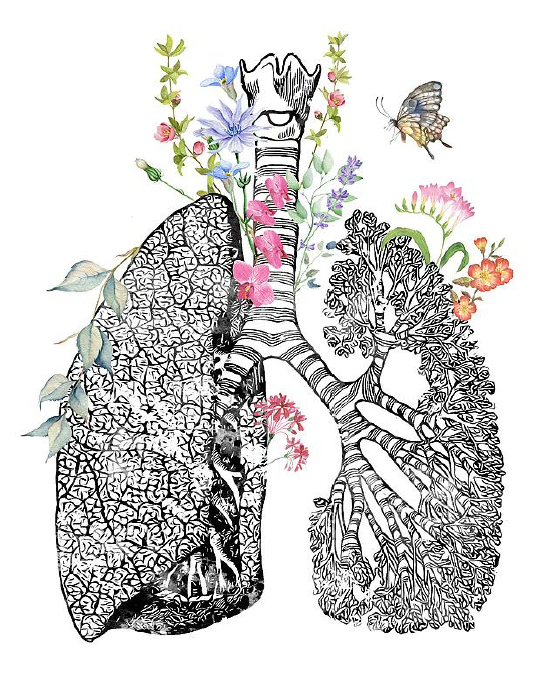light becoming
Musings on Finding Mental, Spiritual & Emotional Freedom
Breathwork is attracting a lot of attention these days, but just how does it accomplish all it says it does?
With practice, you can use breath to calm your nervous system, ease anxiety, help you sleep, increase focus and energy and even shift attitudes & perceptions.
It may seem obvious, but practicing breathwork can help you breathe more effectively by improving the use of your breathing apparatus – your lungs, diaphragm and breathing muscles and, physiologically speaking it does much more. It’s also known to stimulate the heart and other internal organs, increase elimination of toxins and improve oxygenation of cells and energy flow.
How it does all of this is attributed to the genius of the human body – that all systems are connected. In this case, it all starts with breathing well with a truly functional breath.
If you’re doing so, your respiratory diaphragm will ‘flatten’ downward into your belly as you inhale and your low belly, mid belly and chest will expand. The downward movement of your diaphragm stretches your lungs and heart such that you’re able to fill a larger surface area of your lungs and your heart expands slightly. Your diaphragm presses down on the other internal organs and the more effectively you breathe, the more ‘exercise’ you give your internal organs.
The more effectively you breathe, the more gases are exchanged by your lungs, the more oxygenated your cells become which creates more energy and eliminates more toxins. (Fun fact, it’s now believed that about 70% of toxins are released through your exhalation.)
But that’s not it! Sustained practice over a longer period of time can help to re-set restricted breath patterns such as ineffective breathing, shallow breathing, absence of breath to breathing apparatus, etc.

It can also help release latently stored and/or hidden experiences and emotions, increase awareness of the body-mind system, invites access to wisdom that may otherwise remain unknown and helps people reconnect to life and relationships.
How does it do all that? Breathing is a body-based intelligence system linking physiology and psychology, a direct indicator of what’s happening inside that may or may not be obvious – a bit like the lights and warning system in your car – letting you know what needs attention.
(Fun fact, your breath is the one physiological system that is both unconscious (automatic) and conscious (can be influenced / controlled).
One of the ways to do so is by learning to hone your breath and therefor utilise the direct and immediate relationship between your breath and your nervous system. You can likely think of many times when you experienced an event, possibly noticed a resulting change in your nervous system (e.g. fear, excitement, passion)… and then noticed a change in your breath. For example, if you were to hear a loud noise you weren’t expecting or a playful child jumps out of a closet you may startle and your breath may draw in as a gasp!
Fortunately, the reverse is also true – you can influence the state of your nervous system simply by managing your breath. Try it out if you like. First notice your breathing and the general feeling you have internally as well as your state of mind. Now, for the next five minutes or so bring your complete attention to your breath; simply notice yourself breathing in and out, relaxed and easy…. simply notice you’re breathing. After a couple of minutes, notice how you feel. In this example, you were likely already feeling somewhat relaxed and by simply noticing your breath, you brought an even deeper sense of calm to your nervous system. For more challenging situations we need more advanced practices, and like any skill, we practice, practice, practice before the big game.

The idea is to work on and refine calming breath patterns while already feeling relatively relaxed, so that when the pressure is on, the wiring is already in place; your breath, brain and nervous system know what to do. They follow the pattern of breath you’ve practiced to bring calm to your body-mind system.
Here are some simple breath patterns you can practice to help manage stress that are equally useful in the moment as needed or to prepare you for future potential stressful events. The more you practice these while relatively calm, the easier it will be to draw on them when you need them.
Before proceeding with these, I suggest (as with any breath practice) you begin with 3-5 minutes of simple breath awareness / breath observation.
1.) breath ratio. While breathing in and out through your nose, focus on bringing 70% of your inhalation into your low, low belly (all the way to your perineal floor), 20% to just below your belly button and 10% to your upper belly. Let your belly expand and say yes to a full breath!
2.) subtle resistance breathing. While breathing slowly in and out through the nose, create a very slight constriction at the back of the throat and exhale audibly creating a sound a bit like the waves of an ocean (or a quiet (and loving!) version of Darth Vader). The sound will be subtle such that someone else could hear it only if they were very close to you.
3.) slow and extended. While breathing slowly in and out through the nose, first notice the length of your inhalation and exhalation and invite them to be roughly the same length. Slowly begin to extend only your exhalation – very slightly at first. Over time, you might continue lengthening your exhalation only to the point you can do so while remaining in your comfort zone, calm and relaxed.
At any moment your breath is right here for you; all you need to do is notice and if you can focus a wee bit more, you can change how you feel simply by using your breath.
Mind. Body. Breath. Freedom!